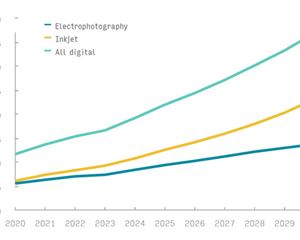PrintWeek round table highlights opportunities in flexo
With the rise in packaging, converters are increasingly shifting toward flexo printing. This has also given rise to some crucial questions. Are brands using flexo better? Has it led to design innovation in packaging? And what more should flexo converters do to convince top brands to establish technology leadership? Plus, there are concerns of sustainability. These and more issues were discussed during the Definitive Flexo Round Table discussion hosted by PrintWeek and WhatPackaging? magazines, in association with Miraclon, on 24 August.
24 Aug 2022 | By PrintWeek Team
The two-hour discussion saw eight industry experts explain the flexo market and technology, the best practices and the possibilities of flexo.
The eight panellists were Steve Smith, the principal consultant, Advanced Print Applications at Miraclon; Anders Stokholm, the global technical key account manager at Tesa SE; Doug Cannon, the regional flexo technical manager at DIC ANZ & ASIA; Sunil Kumar, technical sales consultant – printing at Windmoller & Holscher; Nitin Narkhede, the chief operating officer at SB Packagings; Sethunath Padmanabhan, the managing director – Asia Pacific and Partner at Reproflex3; and Ahmad Nazmi Mohammad, the regional packaging manager, ASEAN Supply Chain at Kimberly-Clark Thailand.
The session was moderated by Sriraam Selvam of PrintWeek and WhatPackaging? magazines.
Starting the discussion on the flexo market, Steve Smith of Miraclon quoted a recent report and said that currently, the Asian market has 20% flexo and 80% gravure. So, there is a huge opportunity for growth in flexo. He said brands are under severe inflationary pressure and must be seen as doing something about sustainability. “Flexo converters here have an opportunity to optimise packaging by utilising the available technology.”
He added, “If brands can optimise their packaging, and if converters can put forward solutions, flexo should come out in front. It uses wider presses with high press speeds with solvent usage, lower energy usage, and the ability to cooperate on multiple jobs simultaneously.”
Sunil Kumar of Windmoller & Holscher said the Indian packaging industry is growing at a CAGR of 10-15%. “Approximately 10-15 CI flexo presses across different manufacturers are coming annually in the Indian market.” He added, “W&H has 80 blown film extrusion machines and 25 CI flexo presses in India.”
Thus, flexo is seeing healthy growth. Speaking from the point of view of a converter, Nitin Narkhede of SB Packagings said flexo has a better advantage for sustainability. Speaking on 12-15 micron at 500-mpm, he said, “Our people are trained. Data capture and measurements are the key points.”
Ahmad Nazmi Mohammad of Kimberley-Clark Thailand said, “Flexo is cost-efficient. With flexo, one can use lower-thickness films and make it sustainable. In terms of design innovation in packaging, both gravure and flexo offer flexibility.”
Anders Stokholm of Tesa said that some converters have started to look into Tesa twinlock self-adhesive and compressible sleeves as an opportunity to reduce cost. "Since this is a CAPEX, the challenge here is for the converter to decide on making the investment despite the volatile global situation that might influence this decision."
Sethunath Padmanabhan of Reproflex3 said, “One of the reasons for Reproflex3 being in India is its conviction towards the growth potential in the flexo market. One trend is the emergence of brand owners in the B2C markets, led by the food segment across the country.”
Doug Cannon of DIC ANZ & Asia, said, “For me, pre-press is essential with process printing and an expanded gamut printing. Once that is done, the ink supplier must ensure that the density is achieved using correct parameters.”












 See All
See All